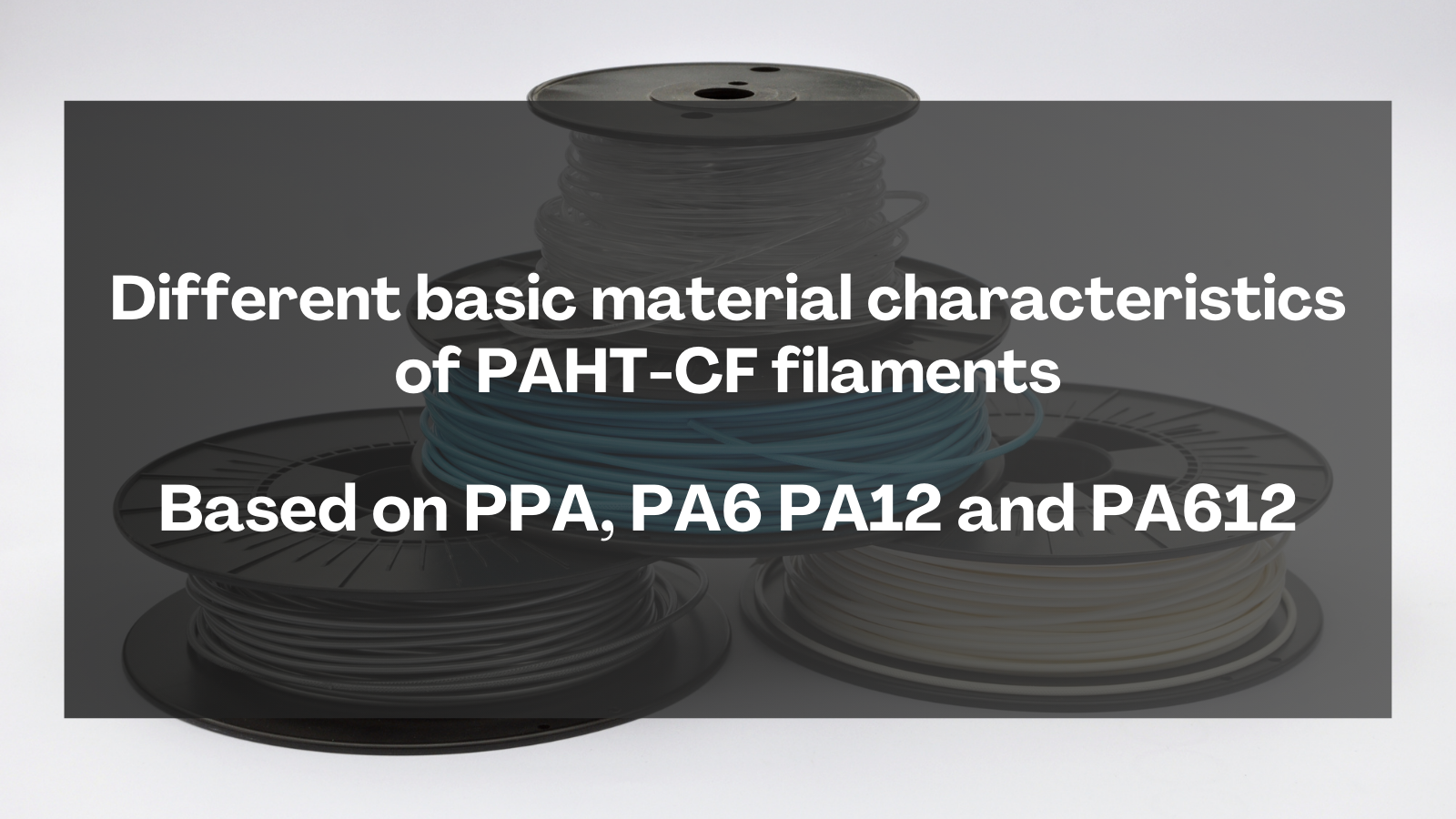素材の説明
- PPA(ポリフタルアミド)ナイロン
PPAナイロンは、卓越した機械的強度、耐薬品性、そして熱安定性で知られる高性能エンジニアリング熱可塑性プラスチックです。自動車、航空宇宙、電子機器、工業製造などの厳しい用途向けに特別に設計されています。PPAナイロンは、優れた寸法安定性、低吸湿性、そして幅広い薬品に対する耐性を備えています。高いガラス転移温度(Tg)と融点により、高温や機械的ストレスにさらされる部品に特に適しています。
Siraya Tech PAHT-CF (PPA ベース) 1kg あたり 69.99 米ドル- PA6(ナイロン6)
PA6は、優れた機械的特性、耐薬品性、そして加工容易性で知られる、広く使用されているエンジニアリング熱可塑性プラスチックです。自動車部品、産業機械、消費財など、中程度の強度と耐久性が求められる用途に多く使用されています。しかし、PA6は吸湿率が高いため、湿度の高い環境では寸法安定性と性能に影響を及ぼす可能性があります。
- PA12(ナイロン12)
PA12は、PA6に比べて密度が低く、柔軟性が高く、耐湿性に優れていることを特徴とする、もう一つの人気のナイロン素材です。フレキシブルチューブ、電線被覆、スポーツ用品など、柔軟性と軽量性が求められる用途に広く使用されています。PA12は耐薬品性にも優れており、融点が低いため印刷も容易です。
- PA612コポリマー
PA612はPA6とPA12の共重合体で、両材料の利点を兼ね備えています。機械的強度、柔軟性、低吸湿性をバランスよく備えています。PA612は、自動車部品、電気コネクタ、工業部品など、強度と寸法安定性の両方が重要となる様々な用途に使用されています。
Siraya Tech Fibreheart PAHT-CF は PPA ナイロンをベースとしており、PA6、PA12、PA612 コポリマーなどの他の一般的な 3D 印刷材料とは異なります。
以下は、PPA (ポリフタルアミド)、PA6 (ナイロン 6)、PA12 (ナイロン 12)、および PA612 コポリマーの違いを強調するための比較表のアイデアです。
|
財産 |
PPA(ポリフタルアミド) |
PA6(ナイロン6) |
PA12(ナイロン12) |
PA612コポリマー |
|
機械的強度 |
素晴らしい |
良い |
適度 |
良い |
|
熱安定性 |
高い |
適度 |
適度 |
良い |
|
耐薬品性 |
素晴らしい |
良い |
良い |
とても良い |
|
寸法安定性 |
素晴らしい |
適度 |
良い |
良い |
|
吸湿性 |
低い |
高い |
低い |
低い |
|
ガラス転移温度(Tg) |
高温(約130℃) |
中程度(約60℃) |
低温(約40℃) |
中程度(約80℃) |
|
融点 |
高温(約300℃) |
中程度(約220℃) |
低温(約178℃) |
中程度(約215℃) |
|
印刷可能性 |
挑戦的 |
適度 |
簡単 |
適度 |
|
アプリケーション適合性 |
自動車、航空宇宙、産業 |
一般工学 |
消費財、フレキシブル部品 |
工業製品、消費財 |
Siraya Tech Fibreheart PAHT-CFは、PPAナイロン組成による高性能フィラメントとして際立っており、卓越した機械的強度、熱安定性、耐薬品性を備えています。そのため、要求の厳しい産業用途に最適であり、多くの要件においてPA6、PA12、PA612コポリマーをベースとした一般的なフィラメントを凌駕します。
PPA ナイロンの特性と利点を理解することで、3D 印刷プロジェクトについて十分な情報に基づいた決定を下すことができ、特定のアプリケーションのニーズに最適な結果を得ることができます。
PAHT-CFやその他のPAベースのフィラメントを使ったことはありますか?ぜひ、下のコメント欄であなたの経験やヒントを共有してください!
記事の内容は以下からまとめられています:
PPA の Xometry
PPAのMebra
PPA の Piedmont CMG


1 コメント
Marty
I’ve used PA6-CF and PA612-CF so far. PA6 did surprisingly well as a gate latch. But the PA612 didn’t absorb nearly as much moisture, sitting out in the rain and didn’t start sagging. So I haven’t had to retorque it at all. I don’t if the higher impact resistance of the PA6, was a smarter idea, Or to rigidness of the PA612.
Thank you for writing this article. I’m about to order a spool of you PPA-CF.